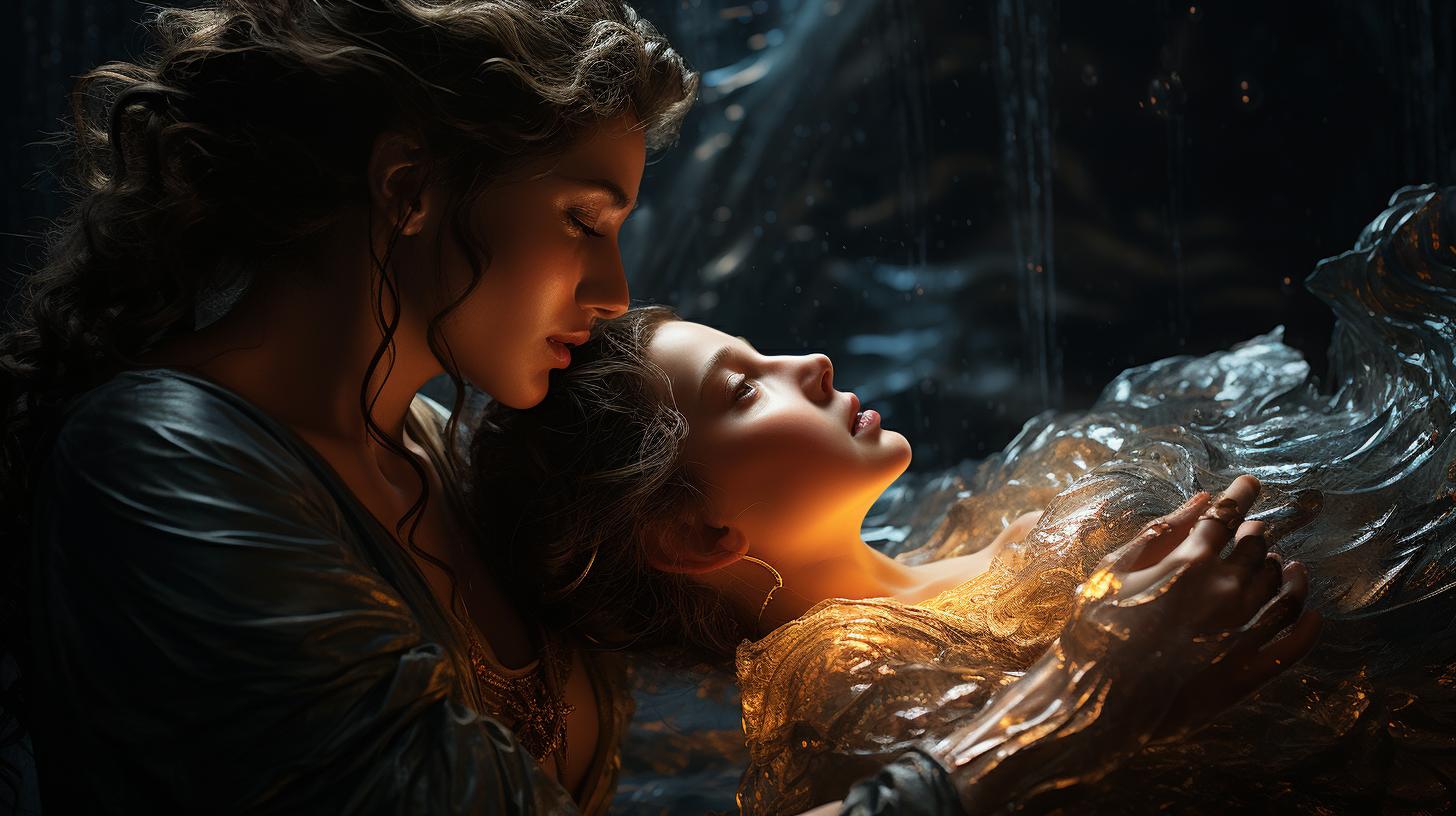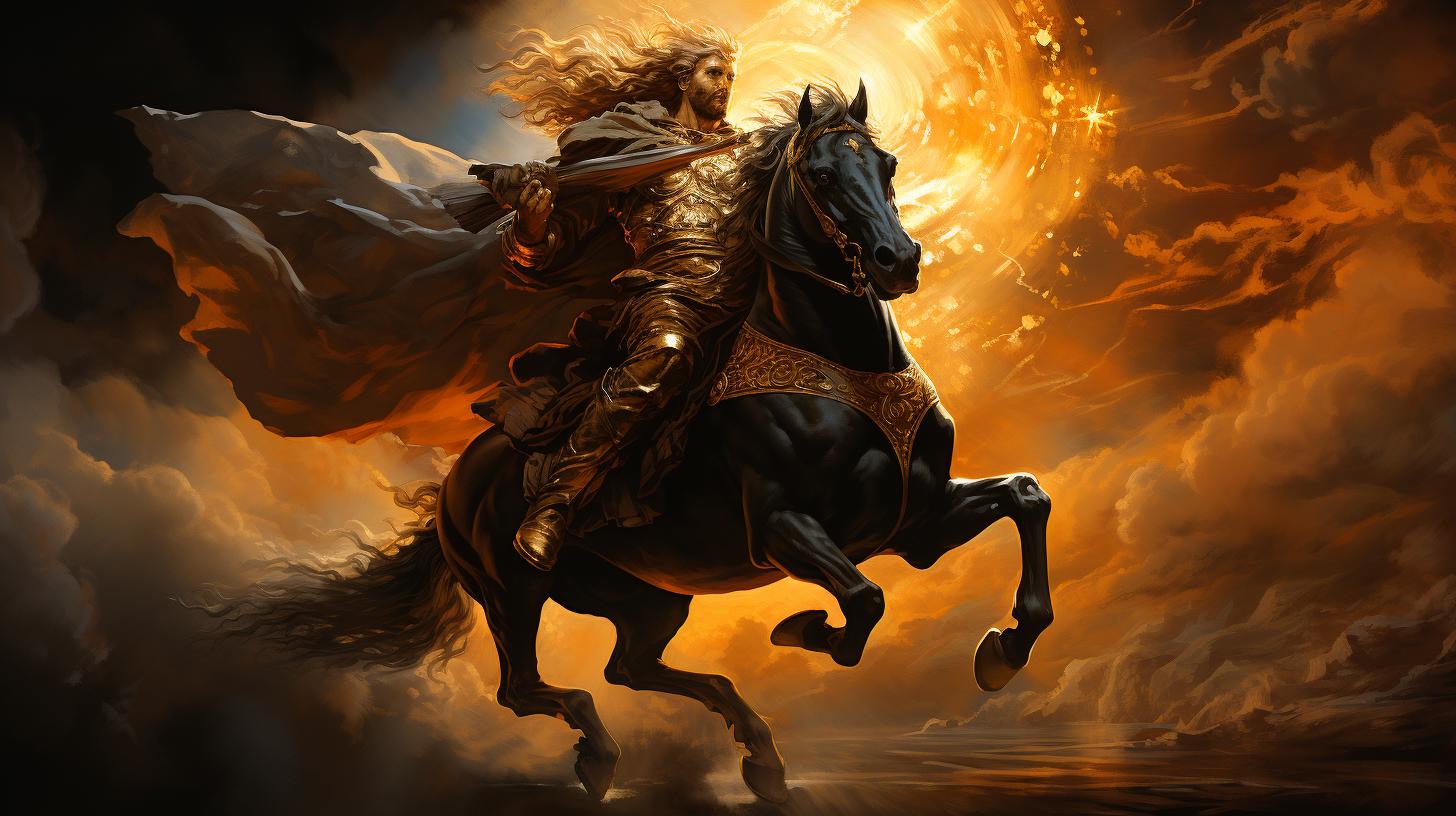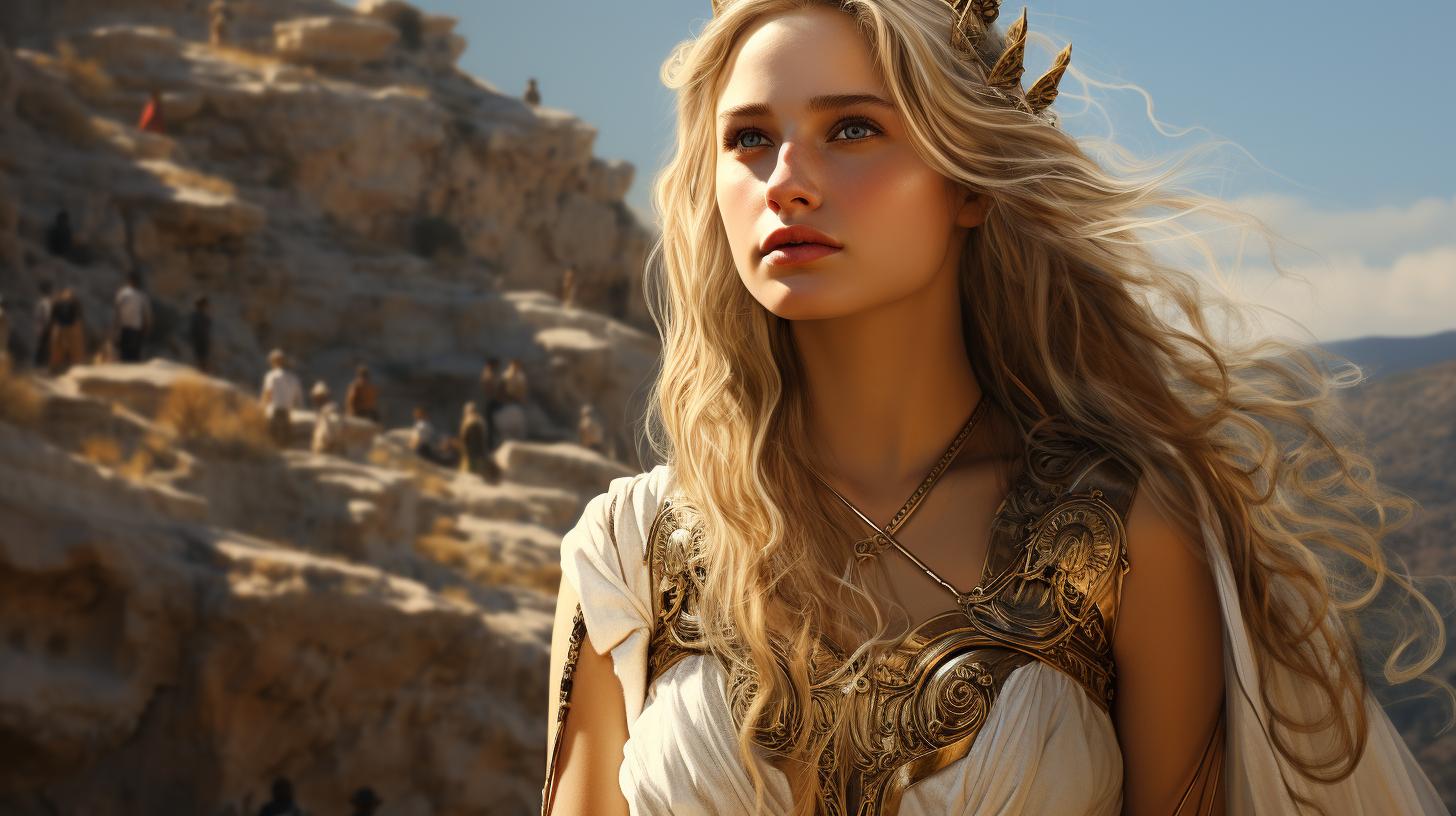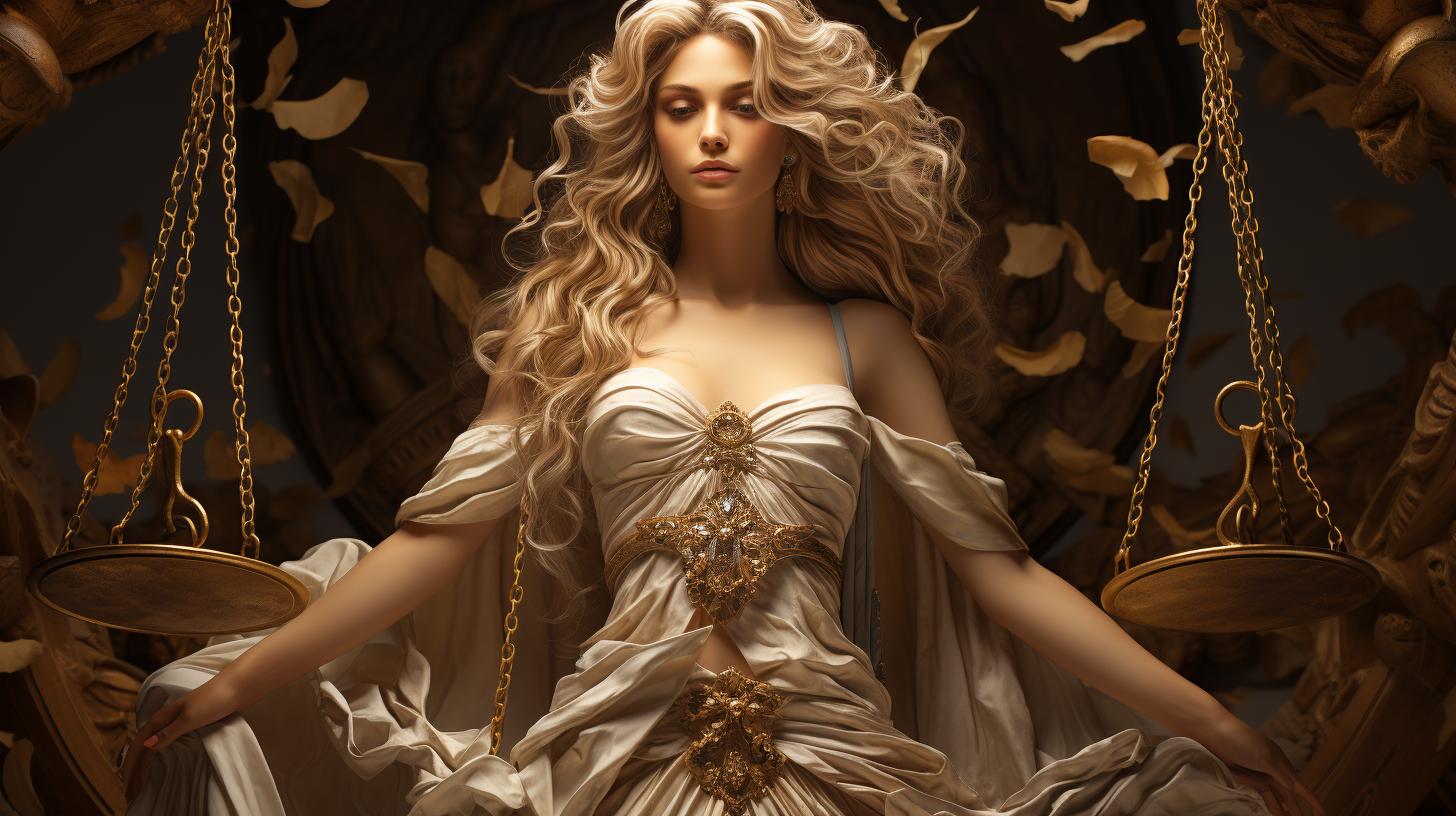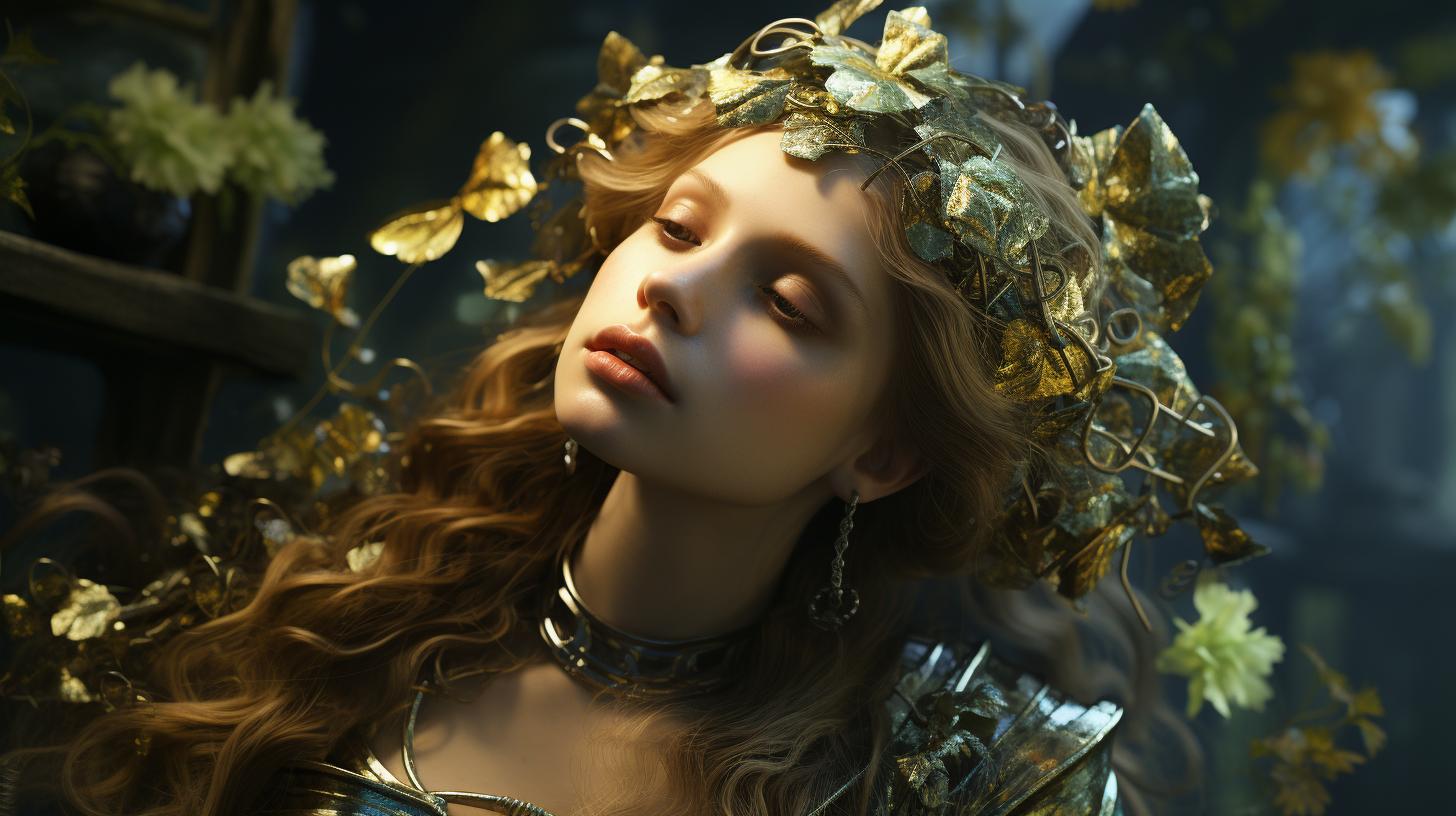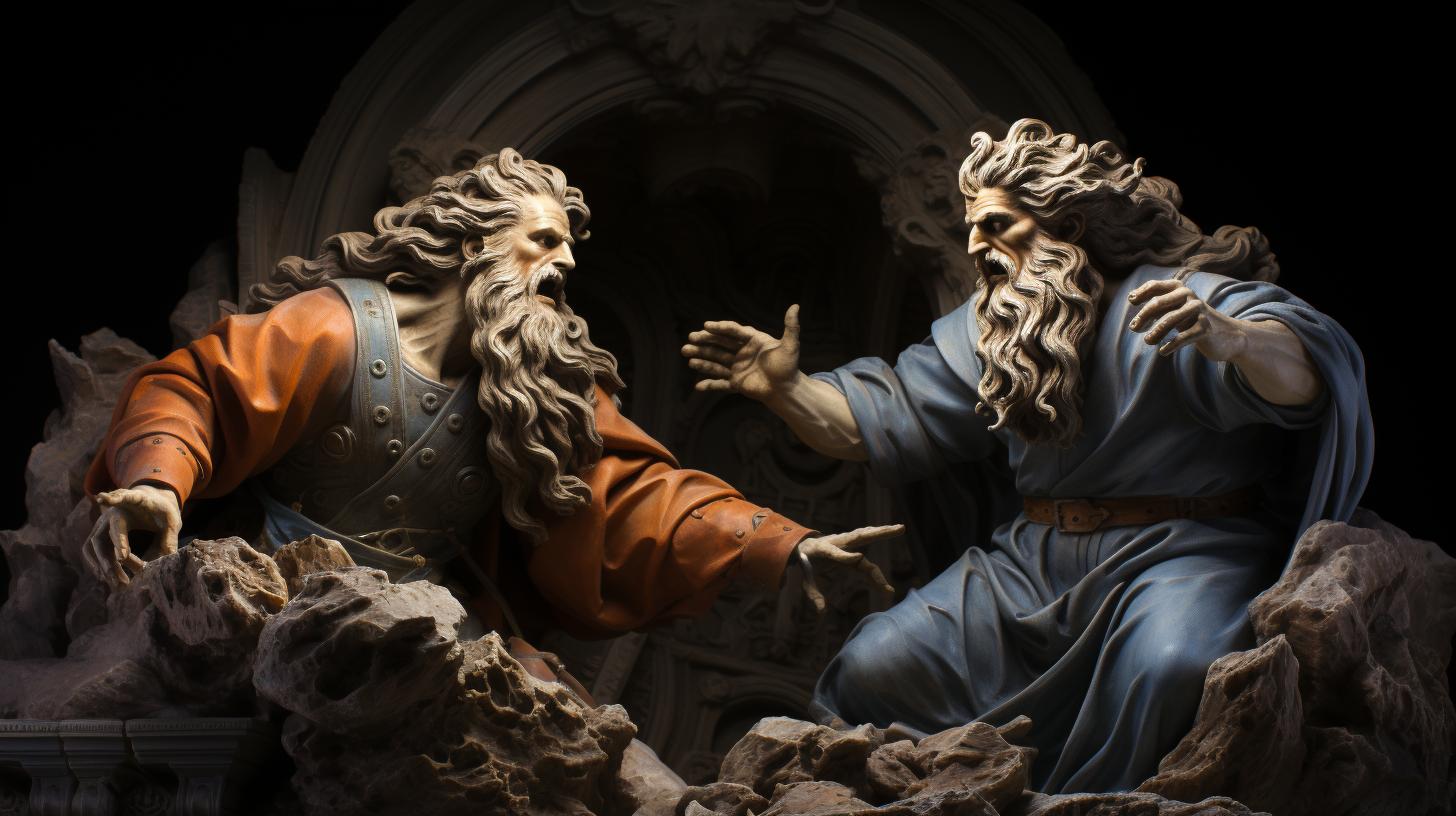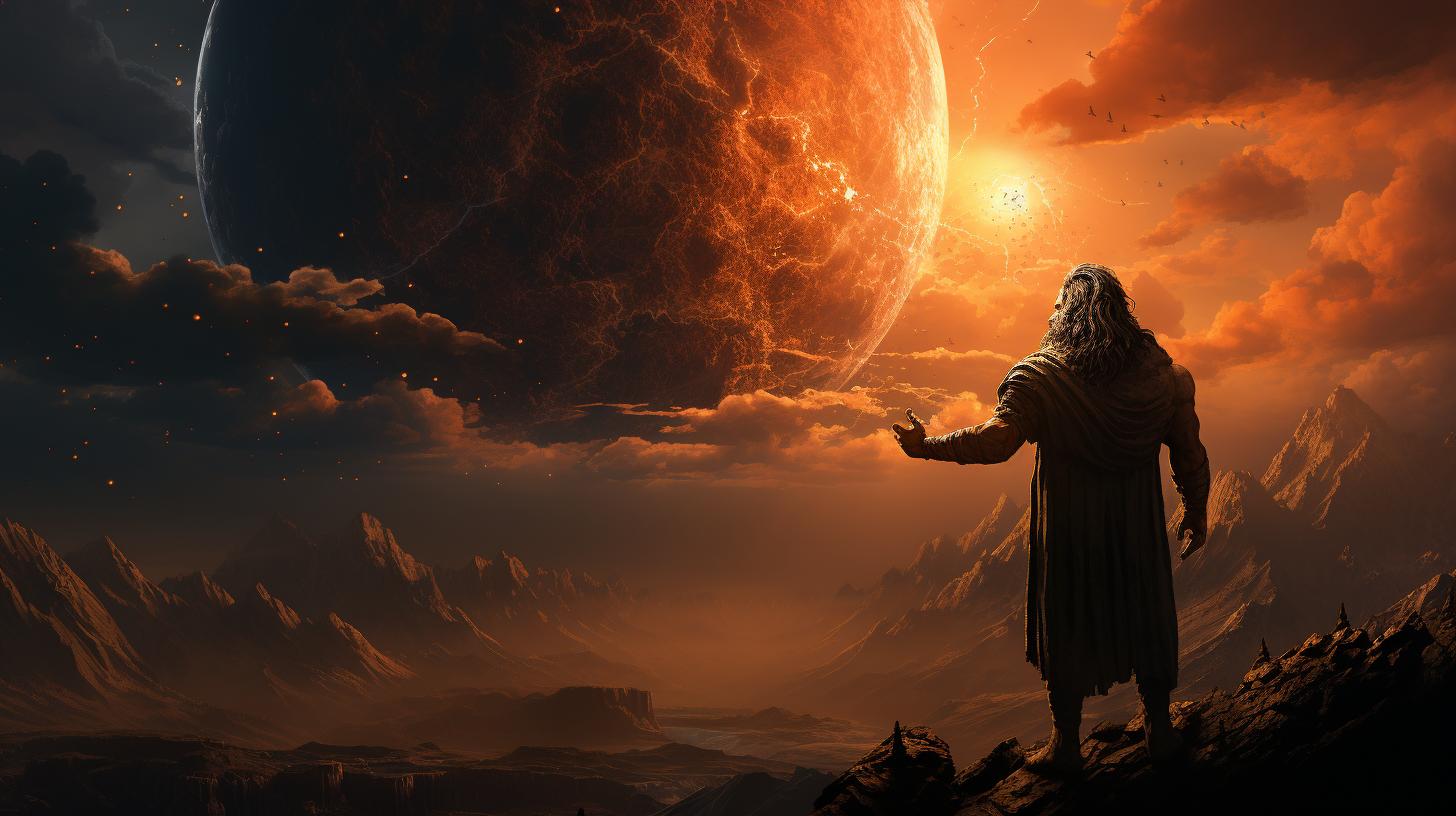Who is Rhea in Greek Mythology: Exploring the Ancient Greek Goddess
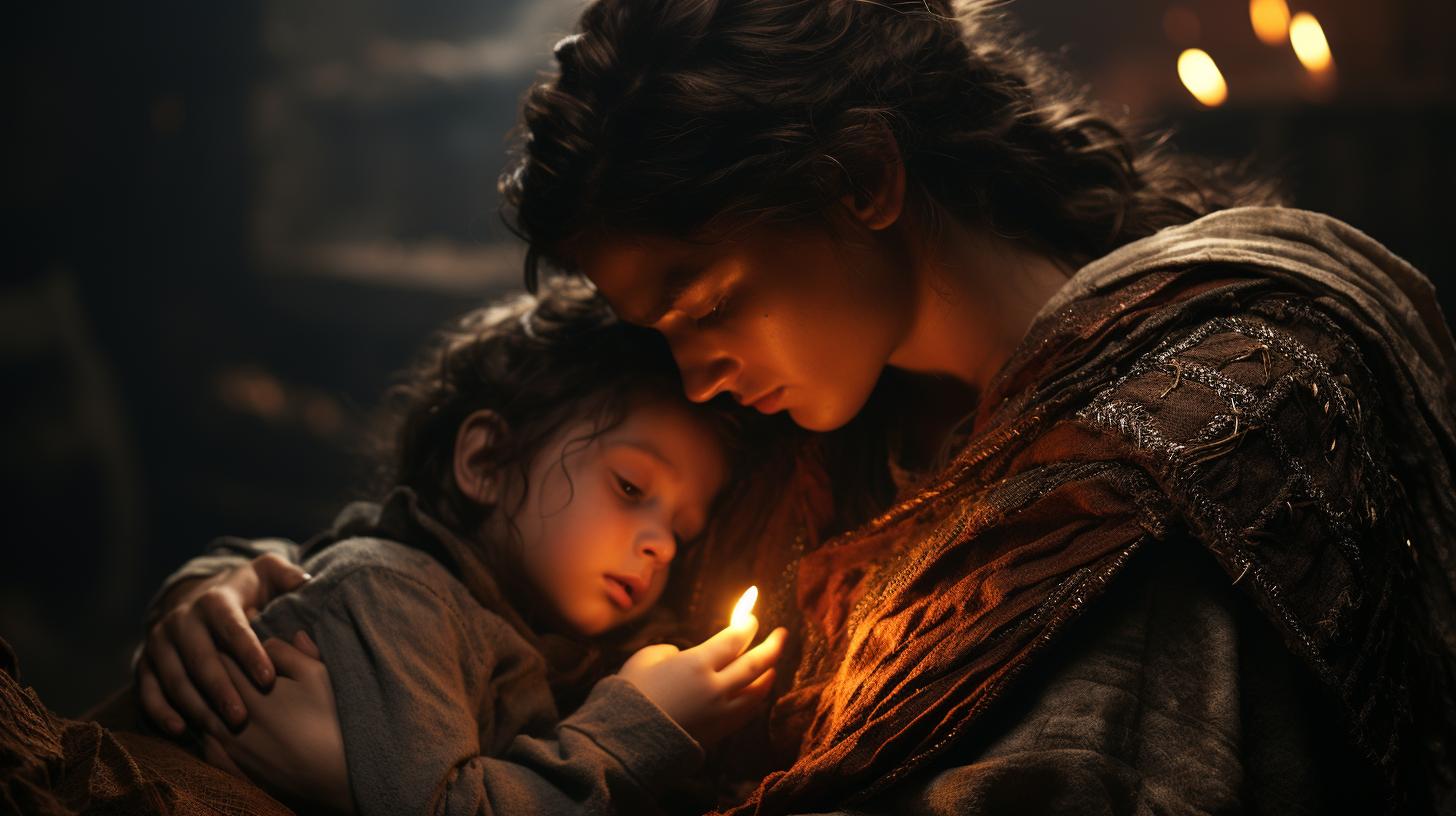
Rhea, a prominent figure in Greek mythology, is known as the mother of the Olympian gods and goddesses. She was the daughter of Gaia and Uranus, and the sister and wife of Cronus. Rhea’s children included Hestia, Demeter, Hera, Poseidon, Hades, and Zeus. In order to protect her children from Cronus, who feared a prophecy about his own downfall, Rhea deceived him by giving him a rock wrapped in swaddling clothes instead of Zeus. This act eventually led to Zeus overthrowing Cronus and liberating his siblings.
Rhea is associated with Earth, fertility, and maternal protection, and she played a role in the birth and upbringing of her grandsons Apollo and Dionysus. She was worshipped in various regions of Greece and depicted as the wife of Cronus, adorned with a crown of towers and accompanied by lions.
Additionally, an artwork titled ‘Saturn Devouring His Son’ represents an event related to the story of Rhea and Cronus. Numerous other mythological figures and references are connected to Rhea, including the Serpent Goddess and the Museo de Brooklyn located on ancestral Lenape lands.
The Family of Rhea and Cronus
Rhea and Cronus are prominent figures in Greek mythology, known for their familial connections and roles in shaping the fate of the gods and goddesses.
The Parents of Rhea
Gaia and Uranus, the primordial deities, are Rhea’s parents.
Gaia represents the Earth, and Uranus represents the sky. Rhea inherits their divine lineage, embodying both the grounding and expansive aspects of creation.
Siblings and Spouse of Rhea
Rhea has various siblings, including Oceanus, Tethys, Hyperion, Mnemosyne, Themis, Cronus, Iapetus, and Coeus. These powerful titans embody different aspects of nature and cosmic forces.
Rhea enters a union with her brother Cronus, becoming his wife and queen of the titans.
Their relationship shapes the story of the Olympian gods and goddesses, marking a pivotal moment in Greek mythology.
Rhea’s Children and the Prophecy
Rhea gives birth to several offspring during her union with Cronus, including Hestia, Demeter, Hera, Poseidon, Hades, and Zeus. However, Cronus fears a prophecy that one of his children will overthrow him, leading him to devour each newborn.
Rhea’s maternal instinct compels her to protect her children. To save Zeus, she cleverly disguises a rock wrapped in swaddling clothes, allowing the future king of the gods to escape his father’s fate.
This daring act sets the stage for Zeus’s eventual victory over Cronus, and the liberation of Rhea’s siblings from within Cronus’s stomach.
In summary:
– Rhea’s parents are Gaia and Uranus, representing the Earth and the sky respectively.
– Rhea has numerous siblings, including Cronus, with whom she enters a marriage.
– Rhea gives birth to Hestia, Demeter, Hera, Poseidon, Hades, and Zeus, but Cronus swallows them due to a prophecy.
– Rhea saves Zeus by tricking Cronus and setting in motion events that lead to the overthrow of Cronus and the eventual release of her other children.
Rhea’s Role as a Mother and Protector
In Greek mythology, Rhea plays a crucial role as a mother and protector to her children. Despite the challenges and danger posed by her husband Cronus, Rhea remains steadfast in her dedication to her offspring.
Her unwavering love and maternal instinct drive her actions throughout various mythical tales.
As a mother, Rhea faces an immense threat when Cronus learns of a prophecy suggesting that one of their children will overthrow him.
Determined to protect her offspring, Rhea devises a clever plan to deceive Cronus. Instead of offering him her newborn son Zeus, she presents him with a rock wrapped in swaddling clothes.
This deception allows Zeus to be raised in secret, away from Cronus’ reach, ensuring his eventual destiny as the one who would overthrow his father.
Rhea’s role as a protector extends beyond her immediate family.
She is revered as a guardian of her divine children and their interests. Her love and care extend to all the Olympian gods and goddesses, ensuring their well-being and safeguarding their divine legacy.
In times of crisis, Rhea stands as a pillar of strength for her children. Her maternal instinct drives her to find solutions and protect them from harm. Her unwavering determination and resourcefulness are evident in her clever ploy to save baby Zeus and the subsequent actions she takes to ensure his rise to power.
Rhea’s role as a mother and protector highlights the significant influence she holds over the destiny of the Olympian gods and goddesses. Her actions shape the course of Greek mythology, setting the stage for Zeus to eventually become the supreme ruler of the gods.
Rhea’s Connection with Gaia and Cybele
Rhea, the ancient Greek goddess and mother of the Olympian gods and goddesses, shares a deep connection with Gaia, the primal Earth goddess, and Cybele, another prominent goddess in Greek mythology.
As the daughter of Gaia and sister to Uranus, Rhea is inherently linked to the earth and its fertility.
Gaia, often referred to as Mother Earth, symbolizes the physical and nurturing aspects of the natural world.
Rhea’s association with Gaia showcases her role as a mother figure, embodying the cyclical nature of life and the sustenance provided by the earth. This connection underscores Rhea’s significance as a divine nurturer and protector.
Furthermore, Rhea is also associated with Cybele, a goddess worshipped in ancient Phrygia. Cybele shares similar characteristics with Rhea and Gaia, emphasizing the connection between fertility, nature, and maternal power.
Cybele represents the wild and untamed aspects of the earth, while Rhea embodies the nurturing and protective aspects.
The intertwined relationship between Rhea, Gaia, and Cybele highlights the importance of fertility, growth, and the sacred bond between mother and child.
It symbolizes the life-giving forces of the earth and the power of female deities in Greek mythology.
Rhea’s Association with Earth and Fertility
Rhea, the ancient Greek goddess, is intrinsically linked to the concepts of earth and fertility. As the daughter of Gaia, the personification of the Earth, Rhea embodies the nurturing and life-giving aspects of nature.
She represents the fertile soil that brings forth growth and abundance.
In Greek mythology, Rhea’s association with earth is seen through her role as a mother and protector. Just as the earth provides sustenance and nourishment to all living beings, Rhea is the primordial mother who nurtures and safeguards her children.
Furthermore, Rhea’s connection to fertility is evident in her numerous offspring. She gave birth to major deities such as Hestia, Demeter, Hera, Poseidon, Hades, and Zeus, who became the ruler of the gods.
Each of these divine beings embodies different aspects of the natural world, ranging from the home and hearth to the sky and the underworld.
As the mother of the Olympian gods and goddesses, Rhea ensured the continuity of life and the cycle of seasons.
She played a crucial role in maintaining the balance between the forces of nature and civilization.
In addition to her maternal role, Rhea’s association with fertility is symbolized through her connection with the word ‘earth’ or ‘soil’ itself.
This linguistic connection reinforces her link to the bountiful and life-giving aspects of the natural world.
Moreover, Rhea’s association with fertility can also be seen in her connection with the pomegranate.
The pomegranate, with its many seeds, is often associated with abundance and fertility in ancient mythology. This further highlights Rhea’s role in bringing forth and nurturing life.
Rhea’s association with earth and fertility earned her reverence and worship in different regions of ancient Greece.
Her role as a mother and provider resonated with people who depended on the land for sustenance. Rhea was worshipped and honored as the embodiment of the Earth’s fertility, ensuring the prosperity of crops and the continuity of life itself.
Rhea’s Involvement in the Birth of Apollo and Dionysus
Rhea played a significant role in the birth and upbringing of her grandchildren, Apollo and Dionysus. Let’s delve into the fascinating details of her involvement.
The Birth of Apollo
According to Greek mythology, Rhea conspired with her daughter Leto to protect Leto during her pregnancy with Apollo. Fearing the wrath of Hera, Leto faced numerous challenges finding a place to give birth.
However, Rhea offered her assistance and advised Leto to seek refuge on the island of Delos. Rhea’s intervention ensured that Apollo would be born in safety.
Rhea’s involvement didn’t end there.
As Apollo grew, she became an influential figure in shaping his destiny. She provided guidance and nurtured his talents, playing a crucial role in his journey towards becoming the god of music, poetry, and prophecy.
Rhea’s love and support undoubtedly contributed to Apollo’s divine abilities and accomplishments.
The Nurture of Dionysus
Rhea also played a vital role in the life of Dionysus, her other grandchild. Dionysus, the god of wine and ecstasy, faced a tumultuous upbringing. After Zeus impregnated Semele, Dionysus’ mother, Hera became jealous and sought to prevent his birth.
Rhea, ever the protector, intervened once again to safeguard her grandson.
Rhea hid Semele away and entrusted the care of Dionysus to the Nymphs and other mystical beings. She ensured that Dionysus grew up in the wild, surrounded by nature and the secrets of the earth.
Rhea’s influence helped shape Dionysus’ personality, granting him a deep connection with the natural world and his powers as the god of wine, festivity, and liberation.
Through her involvement in the births and upbringing of Apollo and Dionysus, Rhea demonstrated her dedication as a mother and protector.
Her love and support contributed greatly to the remarkable destinies of her grandchildren, solidifying her role as a revered figure in Greek mythology.
Worship and Representation of Rhea in Ancient Greece
In ancient Greece, Rhea was highly revered and worshipped in various regions.
Let’s explore her worship and representation across different parts of Greece.
Rhea’s Worship in Different Regions of Greece
Rhea’s worship was widespread throughout Greece, with numerous religious sites dedicated to her. In Crete, she was worshipped as the mother goddess and was considered the protector of the island. The Cretans held grand festivals and rituals in her honor.
In Athens, Rhea formed an important part of the Eleusinian Mysteries, a significant religious festival celebrating the goddesses Demeter and Persephone. Rhea was venerated as the mother figure and played a role in the fertility rites associated with the festival.
In Arcadia, a region in the central Peloponnese, Rhea held a prominent place in local mythology. She was recognized as the mother of many local deities, and her worship was intertwined with nature and fertility.
Symbols and Artistic Representations of Rhea
Rhea was often depicted wearing a crown adorned with towers, symbolizing her connection to power and authority. She was also associated with lions, which represented her protective nature as a mother figure.
Artistic representations of Rhea often depicted her holding a scepter, an emblem of her status as a goddess. The scepter signified her authority over the celestial realm as well as her role as the mother of the gods.
Additionally, Rhea was associated with symbols related to the earth and fertility, such as harvest fruits and grain. These symbols represented her connection to the nurturing aspect of nature and her role in ensuring abundance and prosperity.
The ‘Saturn Devouring His Son’ Artwork
One of the most famous artistic depictions related to Rhea is the artwork known as ‘Saturn Devouring His Son.’ Painted by Francisco Goya, this disturbing image portrays the mythological event involving Rhea and Cronus. It illustrates the fear and brutality of Cronus devouring his own children, representing the struggle for power within the divine realm.
‘Saturn Devouring His Son’ serves as a powerful visual reminder of the significance of Rhea’s actions in thwarting Cronus’ attempts to maintain control. It showcases her role as a cunning mother who outwitted her husband to protect her children and shape the course of Greek mythology.
As Rhea’s importance in Greek mythology cannot be underestimated, her worship and representation across different regions of Greece reflect the reverence and reverence associated with her divine status. The symbols and artwork associated with Rhea provide further insight into her role as the mother figure and protector of the gods.
Other Mythological References Associated with Rhea
Within Greek mythology, Rhea is not only known as the mother of the Olympian gods and goddesses, but she is also linked to various other mythological figures and deities.
Serpent Goddess and Other Deities
Rhea’s association with serpent symbolism can be seen in her connection with the Serpent Goddess, often identified as Gaia or Demeter. This symbolism represents fertility, rebirth, and the cycle of life.
Furthermore, Rhea is also linked to other deities such as Cybele, a powerful and ancient Phrygian goddess associated with wild nature and fertility rites.
References to the Museo de Brooklyn and Pueblo Lenape Lands
It is intriguing to note that Rhea’s mythological references have transcended time and have even found their place in more contemporary contexts.
The Museo de Brooklyn, located in the ancestral lands of the Pueblo Lenape people, houses various artworks that depict Rhea’s dramatic story alongside Cronus. One notable artwork is ‘Saturn Devouring His Son,’ an evocative portrayal of the events related to Rhea and Cronus.
These mythological references serve as a testament to the enduring impact of Greek mythology on art and culture, offering a glimpse into the rich and complex tapestry of Rhea’s significance in ancient Greek beliefs.
.

